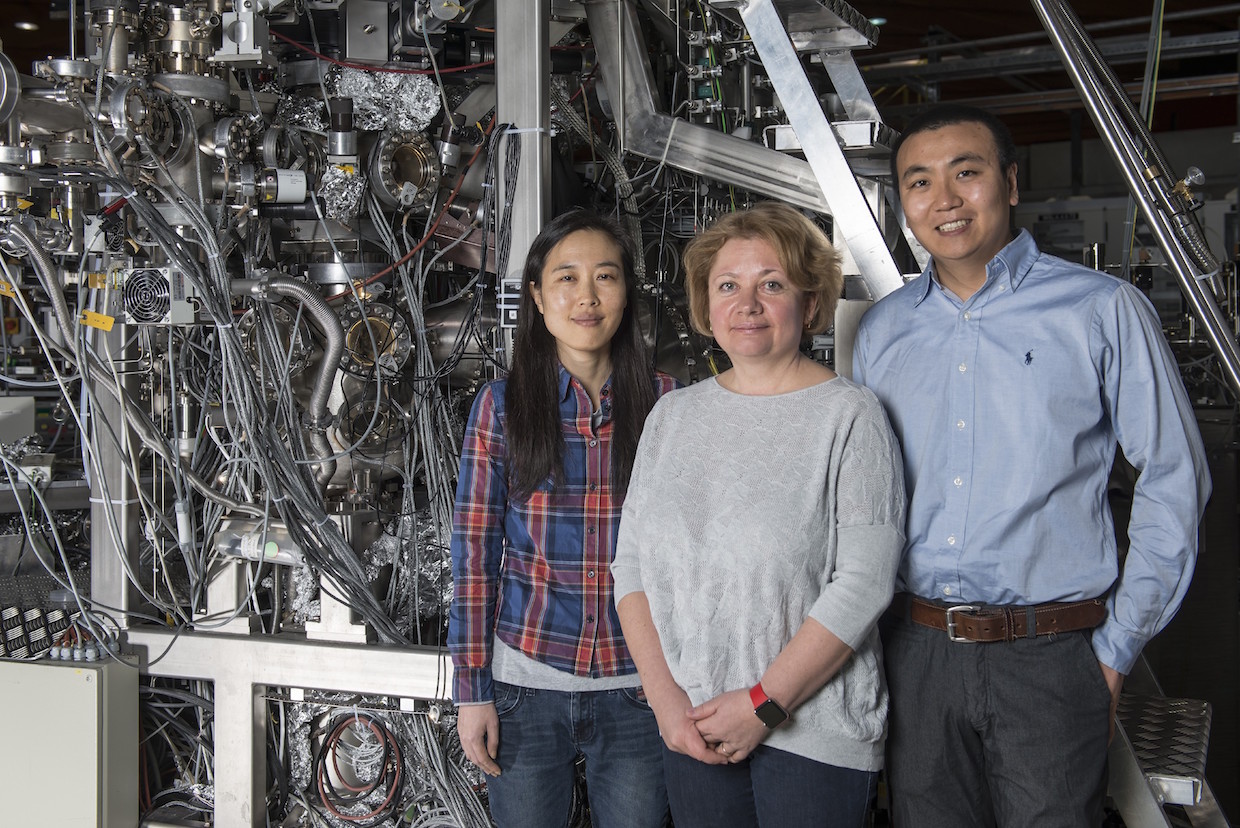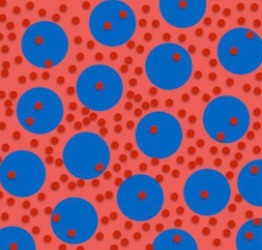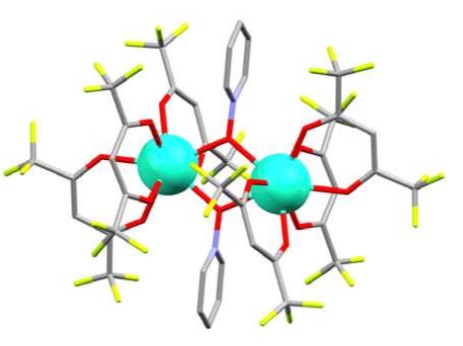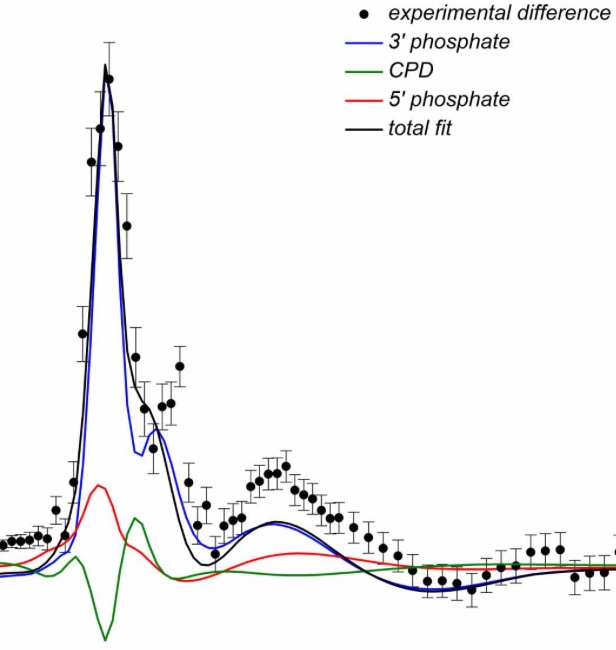 Elvezio Morenzoni Dear colleagues
The operation of the High Intensity Proton Accelerator (HIPA) has just restarted after the regular maintenance shut-down. The Swiss Muon Source (SμS) can again rely for the scientific and user program on a reliable and stable 2.2 mA proton current, to deliver the most intense muon beams worldwide. The scheduled increase of the current to 2.4 mA will further strengthen PSI as the worldwide leading center of muon science for condensed matter and material studies. ;
The muon spin rotation/relaxation user facility with its six instruments attracts every year several hundred users and more than 200 proposals leading to scientific results of high international standing are submitted. The attractiveness is demonstrated by the very broad international user community and an average overbooking factor of more than two. The scientific output is well documented in the 60 publications based on the use of SμS, which have regularly been published in the recent years; of these typically 10 are high-profile publications in journals having an impact factor above 7.1 (PRL). We expect that the coming years will be good years as well. These numbers are the more remarkable considering that this is achieved by a small, but extremely dedicated and competent scientific and technical staff at PSI, which I take the opportunity here to thank ....
Read the continuation of the text further below !
|
|
|
Next calls for proposals
SLS: non-PX beamlines
deadline: September 15, 2016
SLS: PX-beamlines
deadline: October 15, 2016
more information
SINQ
deadline: November 15, 2016
more information
SµS
deadline: December 1, 2016
more information
An overview about all proposal submission deadlines of the PSI facilities can be obtained here.
|
|
|
|
|
New particle could form the basis of energy-saving electronics
 SLS - Weyl fermions move undisturbed through materials SLS - Weyl fermions move undisturbed through materials
The Weyl fermion, just discovered in the past year, moves through materials practically without resistance. Now researchers are showing how it could be put to use in electronic components.
Today electronic devices consume a lot of energy and require elaborate cooling mechanisms. One approach for the development of future energy-saving electronics is to use special particles that exist only in the interior of materials but can move there practically undisturbed. Electronic components base on these so-called Weyl fermions would consume considerably less energy than present-day chips. That's because up to now devices have relied on the movement of electrons, which is inhibited by resistance and thus wastes energy. Evidence for Weyl fermions was discovered ...
Read the full story
|
|
The role of ions in the self-healing behavior of soft particle suspensions
 SINQ and SLS - Crystallization without defects SINQ and SLS - Crystallization without defects
Understanding when a material crystallizes is of fundamental importance in condensed matter. In many materials, the presence of point defects suppresses crystallization. Surprisingly, colloidal hydrogels can overcome this limitation: A small number of large microgels can spontaneously deswell to fit in the crystal lattice of smaller microgels, thus avoiding the occurrence of point defects. We find that this unique particle deswelling is due to an osmotic pressure difference between the inside and the outside of the microgels resulting from the overlap of counterion clouds of neighboring particles. When this pressure difference exceeds the bulk modulus of the large microgels, these shrink, enabling crystallization without point defects.
Read the full abstract
|
|
Robust Magnetic Properties of a Sublimable Single-Molecule Magnet
 SμS - Single molecule magnets retain their properties when deposited on gold SμS - Single molecule magnets retain their properties when deposited on gold
The organization of single-molecule magnets (SMMs) on surfaces via thermal sublimation is a prerequisite for the development of future devices for spintronics exploiting the richness of properties offered by these magnetic molecules. However, a change in the SMM properties due to the interaction with specific surfaces is usually observed. Here we present a rare example of a SMM system which can be thermally sublimated on gold surfaces while maintaining its intact chemical structure and magnetic properties. Muon spin relaxation and ac susceptibility measurements are used to demonstrate that, unlike other SMMs, the magnetic properties of this system in thin films are very similar to those in the bulk ....
Read the full abstract
|
|
Investigating DNA Radiation Damage Using X-Ray Absorption Spectroscopy
 SwissFEL - New insights into radiation damage formation of living matter SwissFEL - New insights into radiation damage formation of living matter
The key to achieving more effective radioprotection and radiotherapy is to understand the exact mechanism of the interaction between radiation and biomolecules, and in particular to obtain the precise structure of the different forms of damage and their relative ratios. Among all biomolecules exposed to radiation, DNA plays an important role because any damage to its molecular structure can affect the whole cell and may lead to chromosomal rearrangements resulting in genomic instability or cell death.
Read the full abstract
|
|
SLS: First EIGER X 16M in operation and new imaging method available in pilot mode
The macromolecular crystallography beamline X06SA at the Swiss Light Source is the first one in the world to upgrade its detector to an EIGER X 16M type, more info.
Furthermore, PSI researchers developed an imaging method that combines small-angle scattering with tensor tomography to probe nanoscale structures in three-dimensional macroscopic samples in a non-destructive way. The method is available at the SLS for all users in the pilot mode now, full story.
|
|
SINQ: Advanced Student Labs at the Swiss Spallation Neutron Source
The Laboratory for Neutron Scattering and Imaging LNS offers students from Swiss and international universities the possibility to do their advanced student labs at PSI. Students from the Nanoscience Institute of the University of Basel and from the Swiss Federal Institutes ETHZ and EPFL learn how to perform various neutron scattering experiments using state-of-the-art instrumentation at the Swiss Spallation Neutron Source SINQ. The participants are supervised by experienced staff scientists and get the opportunity to become acquainted with the scientific research at a large scale facility.
Physics students from both the Niels Bohr Institute of the University of Copenhagen and the Technical University of Denmark take part in actual research projects of the Danish user community as part of their practical education and training.
The topics covered include investigations of chemical and magnetic structures by neutron diffraction, studies of the superconducting vortex lattice by small angle neutron scattering, determination of depth profiles in magnetic multilayers by neutron reflectometry, observations of dynamic processes by quasi elastic neutron scattering and measurements of fundamental excitations in solids by inelastic neutron scattering.
For more information please have a look here or contact us directly.
|
|
SμS: New high pressure initiative at PSI
The SμS facility encounters an increasing demand of beamtime for high pressure μSR studies. To optimize the experimental conditions for these experiments, new low background pressure cells are under development at PSI within the framework of SINE2020. Two meetings, one at PSI and one at ISIS, have been held to decide on the proper choice of the pressure cell materials and the most promising designs. The new pressure cells with a temperature independent background will allow to better study superconducting and magnetic materials down to temperatures of 0.24 K and pressures up to 1.9 GPa.
|
|
SwissFEL: First light from the SwissFEL experimental laser
The experimental laser is an important component for performing time resolved optical pump - X-ray probe experiments at SwissFEL. Only a very high reliability and reproducibility guarantees successful experiments. Flexibility in wavelength is achieved by subsequent optical parametric amplification of the laser output. In a synergy between different research groups at PSI, the SwissFEL Experimental Laser 1 is successfully delivered and installed in a temporary Laser lab by Coherent. At the end of 2016 the system will be moved to its final destination in the SWISSFEL building. Read more
|
|
 Elvezio Morenzoni
Besides its research activities, muon spin spectroscopy at PSI is characterized by a vigorous development program, which led to the development of worldwide unique techniques or instruments such as LEM (low energy μSR for depth dependent studies in nm range) and HAL-9500 for high magnetic field and very low-temperature investigations. However, not only completely new instruments contribute to maintain PSI as a leading center in μSR science. Upgrades of existing instruments are also able to produce quantum steps in scientific performance. To name a few, I would like to mention the implementation of new solid state detectors in the different μSR spectrometers, the redesign of the GPS Instrument (which is accompanied by the construction of a new Spin Rotator in advanced phase of design), the continuous development toward better pressure cells to further improve the already now highest achievable pressure of 2.8 GPa, or the extension of the low temperature capabilities in the Dolly instrument. The latter is a good example of the close link between instrumentation, attractiveness of the facility and finally science output. Immediately after implementation of the low temperature provision in Dolly the overbooking factor has increased by 30% and I am expecting a further increase once all users will become fully aware of the new possibilities, which allow among others to study quantum criticality under low background conditions.
With this, I will like to mention that the potential of μSR is by far not exhausted at PSI. The availability of excellent muon beams drives us to think about novel ideas, which have the potential to revolutionize μSR, such as micron sized beams and vertex reconstruction of the muon-positron pair. These are new tools that can fully exploit of the potential offered by the high intensity beams available at our institute.
Elvezio Morenzoni,
on behalf of the Laboratory for Muon Spin Spectroscopy, LMU, PSI
|
|
JUSAP - The Joint Users Association
 Sarah Dunsiger
In the last PSI facility newsletter published in March 2016, the ESUO questionnaire for the Photon Science Strategy Panel (PSSP), initiated by DESY, was distributed to the user community. The user input has now been collected, analyzed and the corresponding report was presented by Prof. U. Pietsch, the ESUO chairman, during the 3rd PSSP meeting at ESRF on June 10th-11th 2016. This user input generated extensive discussion by the panel concerning the next steps towards a document to be presented to the European Commission next year.
The current JUSAP committee has now been in place since 2012. Its members are either up for re- election or new members need to be proposed. While the candidates are not yet selected, we would like to announce that the election of the JUSAP panel will take place in the second half of this year electronically. The candidates will be visible on the JUSAP webpages.
We would like ask the user community for their input on possible candidates, as well as on their suggestions towards the future goals of JUSAP. With best wishes for your experiments.
Sarah Dunsiger (Chair)
On behalf of the JUSAP committee.
|
|
ICRS-10: 10th International Conference on Residual Stresses
July 3-7, 2016, Sydney Brighton Le Sands Beach, Australia
VUVX2016: 39th International conference on Vacuum Ultraviolet and X-ray Physics
July 3-8, 2016, Zurich, Switzerland
PNCMI: International Conference on Polarised Neutrons for Condensed Matter Investigations
July 4-7, 2016, Freising, Germany
July 6-8, 2016, Les Diablerets, Switzerland
ACNS 2016: 8th American Conference on Neutron Scattering
July 10-14, 2016, Long Beach, CA, USA
SXNS14: Annual International Conference on Surface X-ray and Neutron Scattering
July 10-14, 2016, Long Island, NY, USA
July 14-15, 2016, London, UK
July 17-22, 2016, Garching, Germany
MLZ Conference on 'Neutrons for Energy'
July 18-21, 2016, Bad Reichenhall, Germany
18th National School on Neutron and X-ray Scattering
July 30 - August 13, 2016, Macclesfield, Argonne (IL) and Oak Ridge (TN) National Labs, USA
65th Annual Conference on Applications of X-ray Analysis
August 1-5, 2016, Rosemont, IL, USA
XRM2016: X-Ray Microscopy Conference 2016
August 15-19, 2016, Oxford, UK
|
International Conference on Structural Biology
August 22-23, 2016, New Orleans, LA, USA
ECM-30 satellite meeting: PSI Powder Diffraction School 2016 - Modern Synchrotron Methods
August 22-26, 2016, Villigen, Switzerland
ECM-30: European Crystallographic Meeting
August 28 - September 1, 2016, Basel, Switzerland
50 Years of Neutron Backscattering Spectroscopy
September 2-3, 2016, Garching, Germany
Science@FELs 2016
September 5-7, 2016, Trieste, Italy
QENS 2016: International Conference on Quasielastic Neutron Scattering
September 5-8, 2016, Potsdam, Germany
20th JCNS Laboratory Course Neutron Scattering
September 5-16, 2016, Jülich and Garching, Germany
Synchrotron Radiation and Neutrons in Art & Archaeology
September 6-9, 2016, Chicago, IL, USA
September 8-9, 2016, Berlin, Germany
September 12-16, 2016, Grenoble, France
September 20-22, 2016, Kiel, Germany
September 22, 2016, Amsterdam, Netherlands
3rd European Crystallography School (ECS3)
September 25 - October, 2, 2016, Bol, Croatia
MEDSI2016: Mechanical Engineering Design of Synchrotron Radiation Equipment and Instrumentation
October 2, 2016, Barcelona, Spain
|
|
|
|